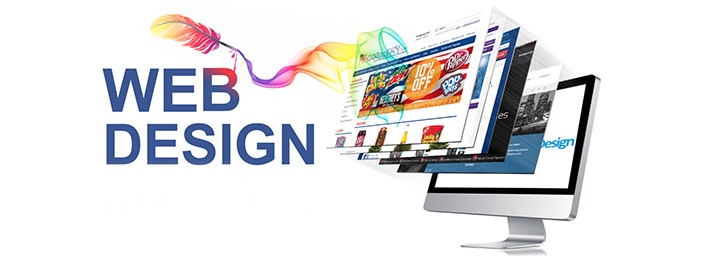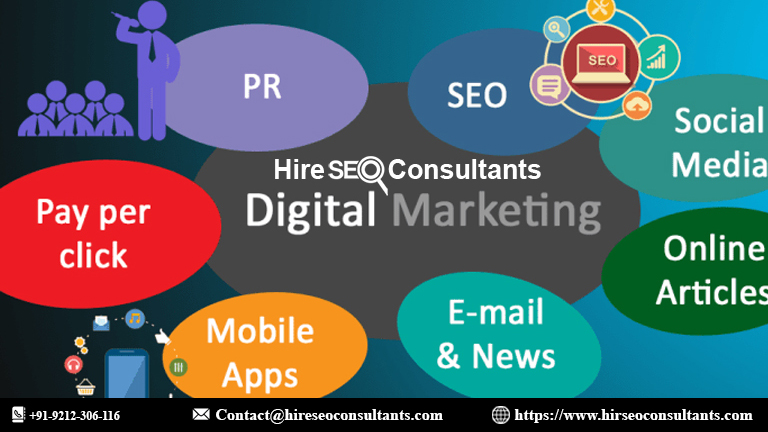Visual Identity Building a Strong Brand Through Design
Discover how visual identity plays a crucial role in building a strong brand. Learn the key elements of design that create a lasting impression and set your brand apart.
In today’s hyper-competitive market, creating a lasting impression is crucial. A brand's visual identity forms the foundation for building recognition and differentiation. It includes the design elements such as logos, color palettes, typography, and imagery that convey the essence of the brand. Visual identity plays a significant role in how a business is perceived by its audience, which can impact its success over time.
In this article, we’ll delve into the various components that make up visual identity, why it is important for businesses, and how to build a strong visual identity that enhances your brand's position in the market.
What is Visual Identity?
Visual identity refers to the visible elements of a brand that represent and communicate its values, mission, and personality to the public. It is a powerful tool that helps create a unique image in the minds of customers, enabling them to recognize and differentiate the brand from its competitors.
While it is easy to associate visual identity solely with logos or colors, it encompasses much more. A well-crafted visual identity includes several key elements such as:
- Logo
- Color Palette
- Typography
- Imagery
- Graphics & Icons
- Packaging Design
Each of these elements works together to create a cohesive visual system that supports the brand’s message and positioning.
Why is Visual Identity Important for Brands?
-
First Impressions Matter
In most cases, a brand's visual identity is the first interaction someone will have with a company. A strong and well-crafted identity ensures that the first impression is memorable and positive. In seconds, consumers will make judgments about your brand based on its appearance, making it crucial to have a visual identity that reflects your core values.
-
Builds Brand Recognition
Familiarity breeds trust, and consistent visual identity fosters brand recognition. By using the same logo, color palette, and typography across all touchpoints—whether it’s a website, business card, or social media post—you create a unified brand image that becomes easily recognizable.
-
Differentiation in a Crowded Market
In highly competitive markets, standing out is essential. Visual identity provides the tools to differentiate your brand from others. By crafting a unique and recognizable identity, you can create an emotional connection with your audience and carve out a distinctive place in their minds.
-
Consistency Across Platforms
A cohesive visual identity enables a brand to present itself consistently across all platforms—online and offline. Whether it’s a digital ad, a social media post, or physical packaging, maintaining uniformity ensures that your brand is perceived as reliable and professional.
Key Elements of a Strong Visual Identity
1. Logo
The logo is often the cornerstone of a brand’s visual identity. It is the most recognizable symbol and usually the first thing that comes to mind when people think of your brand. An effective logo is:
- Simple: It should be easy to recognize and remember.
- Scalable: It must look good at any size, whether it’s on a billboard or a business card.
- Timeless: A good logo will stand the test of time and won’t require frequent redesigns.
- Versatile: It should work across different mediums—print, digital, and physical products.
2. Color Palette
Colors are powerful communicators of emotions and perceptions. For example, blue is often associated with trust and stability, while red can convey excitement and urgency. Choosing the right color palette is critical because it sets the mood and tone for your brand. A carefully selected color palette:
- Enhances Brand Recognition: Consumers will often associate certain colors with your brand, making it easier to remember.
- Creates Emotional Impact: The colors you choose can evoke different emotions, from trust and security to excitement and passion.
- Provides Consistency: A defined color palette ensures that your brand looks consistent across all visual materials.
3. Typography
Typography is more than just choosing a font. It reflects the personality and tone of your brand. Whether you use serif fonts for a more traditional feel or sans-serif fonts for a modern and clean look, the typeface should align with the overall brand message.
Important considerations when choosing typography include:
- Readability: Your text must be easy to read in different sizes and contexts.
- Compatibility: Your chosen fonts should work well with your logo, colors, and other design elements.
- Hierarchy: Different fonts or sizes can be used to create a visual hierarchy, helping guide the viewer's eye through the content.
4. Imagery and Photography
Images and photography are potent tools for storytelling. They can create an emotional connection with your audience, convey a message, and enhance your brand's visual appeal. When selecting imagery, consider:
- Relevance: Your images should align with your brand values and the message you want to convey.
- Consistency: Like other design elements, your images should be consistent in style and tone across all platforms.
- Quality: High-quality visuals are essential. Poorly designed or low-resolution images can damage your brand's credibility.
5. Graphics and Icons
Graphics and icons can be used to supplement and enhance a brand’s message. They are especially useful in simplifying complex information or drawing attention to specific elements. When creating or choosing icons:
- Stay Consistent: Ensure the style, colors, and sizes match your overall brand identity.
- Maintain Simplicity: Icons should be easy to understand at a glance.
- Enhance Communication: Use them to convey messages more efficiently than text or other visuals alone.
Steps to Creating a Strong Visual Identity
- Create or Choose Imagery: Develop a photography style or select imagery that matches your overall brand aesthetic.
- Select Typography: Pick fonts that are legible, modern, and consistent with your brand’s personality.
- Choose the Color Palette: Select colors that align with the emotions you want your brand to evoke.
- Design the Logo: Collaborate with professional designers to create a logo that reflects your brand's values.
-
Develop Your Design Elements
With the foundation set, you can start developing the key components of your visual identity:
-
Research Your Market and Competitors
Knowing what your competitors are doing can help you find gaps in the market. Study their visual identities and identify ways you can differentiate your brand. Also, analyze current market trends to make informed decisions about which design elements might resonate with your audience.
-
Understand Your Brand
Before you start developing a visual identity, it’s crucial to have a deep understanding of your brand. This includes your mission, vision, target audience, and core values. These elements should guide the development of your visual identity to ensure it resonates with your audience and aligns with your brand’s goals.
-
Create a Visual Identity System
Once you’ve developed all the individual elements, create a visual identity system. This is essentially a set of guidelines that govern how your brand’s visual elements should be used. This includes:
- Logo Usage: Define how and where the logo should appear, including size restrictions and placement rules.
- Color Usage: Outline the specific color codes (CMYK, RGB, Hex) and how they should be applied in different mediums.
- Typography Rules: Set guidelines for which fonts to use and when, including heading, subheading, and body text sizes.
- Image Style: Provide examples of acceptable imagery styles, including any filters or treatments that should be applied.
How to Maintain a Consistent Visual Identity
A well-defined visual identity requires ongoing maintenance to ensure consistency. Here are some best practices for maintaining a cohesive brand image:
-
Regular Audits
Conduct regular audits of all your brand materials to ensure they align with your visual identity guidelines. Look for inconsistencies in logo usage, color palette, and typography across different platforms.
-
Training and Education
Ensure that everyone in your organization, especially those in marketing and design roles, understands the visual identity guidelines. Provide training on how to use brand assets correctly and encourage feedback to refine the visual system over time.
-
Update and Evolve
As your business grows and the market evolves, your visual identity may need to adapt. However, changes should be strategic and gradual to avoid alienating your audience. Always test new elements before fully integrating them into your brand.
Expanding the Visual Identity Across Different Channels
Now that you understand the key components of visual identity and how to build one, it’s important to explore how it can be expanded across different channels. A strong visual identity should be adaptable and cohesive across both digital and physical platforms.
1. Website and Digital Presence
Your website is one of the most important touchpoints for your brand. It's often the first place a potential customer will interact with your business. A consistent visual identity across your website is essential to establishing credibility and professionalism.
- Logo Placement: The logo should appear prominently, typically in the header, so that visitors immediately recognize the brand.
- Color Palette Usage: Ensure that the colors used on your website reflect your primary brand colors. Whether it’s buttons, backgrounds, or headlines, consistency with your color palette reinforces your brand.
- Typography Consistency: Use the selected brand fonts throughout your website, maintaining the same hierarchy for headings, subheadings, and body text.
- Imagery and Graphics: All imagery, icons, and graphics should follow the visual identity guidelines, contributing to a cohesive look and feel.
Your digital presence extends beyond your website to social media, email marketing, and any other online platforms where your brand interacts with customers. Every platform should reflect the same visual identity to maintain consistency and enhance brand recognition.
2. Social Media
Social media platforms like Instagram, Facebook, LinkedIn, and Twitter offer unique opportunities to express your visual identity. However, with different platforms catering to different audiences, it’s important to maintain consistency while also tailoring content to the specific platform.
- Profile Picture and Banners: Always use your brand logo as the profile picture, and make sure any banners or cover images align with your brand’s visual style.
- Color Schemes: Posts, ads, and stories should reflect your color palette, ensuring that your visual identity stands out even in a fast-scrolling environment.
- Graphics and Layouts: Whether it’s a static post or a video, ensure that all content has the same look and feel, from fonts to imagery styles. Many brands develop templates for their social media posts to maintain uniformity.
- Branded Hashtags and Filters: If appropriate, consider creating branded hashtags or using consistent filters for your images. This ensures your posts have a recognizable aesthetic.
3. Packaging and Print Collateral
For brands that offer physical products, packaging is a critical element of visual identity. Great packaging not only protects the product but also enhances the brand experience. Here’s how to integrate your visual identity into packaging:
- Logo and Typography: The logo should appear clearly on the product packaging, and the typography should be easy to read. The placement of these elements should follow your brand guidelines.
- Color Palette: Packaging should be a direct reflection of your brand colors. Whether bold or subtle, these colors should be carefully selected to reflect the brand's personality.
- Design and Imagery: High-quality, relevant imagery and design elements should align with the rest of your visual identity. The packaging should give off a similar vibe as your website and other branding materials.
For printed materials such as business cards, brochures, or posters, consistency is equally important. Use your visual identity guidelines to inform decisions about layout, imagery, and text. These materials represent your brand in physical form, and any inconsistencies can weaken the overall perception of your business.
4. Advertising and Marketing Campaigns
Whether you’re running digital ads on Google, print ads in magazines, or billboards in high-traffic areas, your visual identity should be instantly recognizable. Ads are a chance to showcase your brand and communicate its core message, so maintaining consistency is key.
- Ad Design: Use your logo, colors, fonts, and imagery as per your brand guidelines. Ensure that each ad reflects the overall style of your brand, even if the message or audience differs.
- Video Ads: For video advertisements, the visual identity should extend beyond static design. Consider how your color palette, typography, and logo can be incorporated into motion graphics, transitions, and lower-thirds. Subtlety is important, but so is consistency.
5. Events and Trade Shows
For businesses that participate in trade shows or host events, your visual identity can be a powerful tool in setting up an inviting and memorable space. Whether it’s banners, booth designs, or product displays, every element should reflect your brand.
- Signage: Ensure that all signs, banners, and displays use the proper logo, colors, and fonts.
- Branding Materials: Everything from giveaways to brochures should align with the visual identity.
- Event Staff: Even what staff wear and how the space is designed should reflect the visual identity, offering attendees a unified brand experience.
The Role of Visual Identity in Brand Growth
Building a strong visual identity is not just about aesthetics; it also plays a significant role in brand growth. Here’s how a well-crafted visual identity can contribute to the long-term success of your business:
1. Builds Trust and Credibility
A consistent visual identity instills trust in your audience. Consumers are more likely to trust a brand that looks professional and reliable. When your visual elements are coherent and polished, it signals that you pay attention to detail and are serious about your brand, which can help attract and retain customers.
2. Enhances Customer Loyalty
While this article focuses on avoiding customer experience content, it’s important to note that a consistent visual identity can indirectly foster customer loyalty. A cohesive and recognizable brand helps create an emotional connection with your audience, making them more likely to stick with your products or services over time.
3. Supports Marketing Efforts
A solid visual identity strengthens your marketing efforts. From SEO to social media marketing and pay-per-click (PPC) advertising, your visual identity plays a role in how your brand is perceived. Whether you’re creating content for blog posts, videos, or online ads, your visual identity ties everything together, ensuring your audience knows who you are and what you stand for.
4. Simplifies Brand Expansion
As your business grows, you may expand into new markets or product lines. A well-defined visual identity makes it easier to introduce new products or services because you’re working from a strong foundation. Consumers will already recognize your brand, which can help streamline marketing efforts for new initiatives.
Common Mistakes to Avoid in Visual Identity
Even the best brands can make mistakes when it comes to creating and maintaining their visual identity. Here are some pitfalls to avoid:
1. Inconsistency
One of the biggest mistakes brands make is being inconsistent with their visual identity. Whether it’s using the wrong colors, fonts, or logo variations, inconsistency can confuse your audience and weaken your brand image. Be diligent in maintaining consistency across all platforms.
2. Overcomplication
Sometimes, brands try to pack too much into their visual identity. Overly complicated logos, intricate color schemes, and too many font styles can make your brand appear chaotic and unfocused. Keep your visual identity simple and clean to enhance recognition and impact.
3. Ignoring Guidelines
If you’ve taken the time to create a brand style guide, use it! Ignoring your visual identity guidelines can lead to a disjointed brand presence. Make sure that everyone involved in creating your brand materials—designers, marketers, and even external vendors—understands and follows the guidelines.
4. Not Evolving with the Times
While consistency is key, it’s also important to recognize when it’s time to evolve. Trends change, markets shift, and audiences grow. Sticking rigidly to outdated design elements can make your brand seem out of touch. Regularly review your visual identity and make small adjustments as needed to stay relevant.
A well-crafted visual identity is one of the most important assets your brand can have. It not only creates a strong first impression but also builds recognition, trust, and loyalty over time. By ensuring that all elements of your visual identity—logo, color palette, typography, imagery, and more—are consistent and cohesive, you set your brand up for success.
Frequently Asked Questions (FAQ) About Visual Identity
1. What is visual identity?
Visual identity refers to the collection of visual elements that represent a brand. It includes components such as the logo, color palette, typography, imagery, and graphics that collectively convey the brand's values, personality, and message to the public.
2. Why is visual identity important for a brand?
Visual identity is crucial because it shapes how a brand is perceived and recognized. A strong visual identity helps create a memorable impression, fosters brand recognition, and ensures consistency across various touchpoints. It also differentiates your brand from competitors and builds trust and credibility with your audience.
3. What are the key elements of visual identity?
The key elements of visual identity include:
- Logo: The primary symbol representing your brand.
- Color Palette: The set of colors used consistently across brand materials.
- Typography: The fonts and type styles used in brand communications.
- Imagery: The style and type of images used, including photography and graphics.
- Graphics and Icons: Visual elements that support and enhance the brand message.
- Packaging Design: The design of product packaging that reflects the brand’s identity.
4. How do I create a strong visual identity for my brand?
To create a strong visual identity, follow these steps:
- Understand Your Brand: Define your brand’s mission, values, and target audience.
- Research the Market: Analyze competitors and market trends to find opportunities for differentiation.
- Develop Design Elements: Create or choose a logo, color palette, typography, and imagery that align with your brand’s essence.
- Create a Visual Identity System: Develop guidelines for using your visual elements consistently across all platforms.
- Maintain Consistency: Ensure that all brand materials adhere to your visual identity guidelines.
5. How can I ensure consistency in my visual identity across different channels?
To ensure consistency, use your visual identity guidelines as a reference for all brand materials. This includes maintaining uniformity in logo placement, color usage, typography, and imagery. Regular audits of your brand materials and training for team members involved in creating or managing brand assets can also help maintain consistency.
6. How does visual identity impact brand growth?
A well-defined visual identity supports brand growth by:
- Building Trust and Credibility: A consistent and professional visual identity fosters trust with your audience.
- Enhancing Customer Loyalty: A recognizable and cohesive visual identity can strengthen emotional connections with customers.
- Supporting Marketing Efforts: Consistent visual identity enhances the effectiveness of marketing campaigns and advertisements.
- Facilitating Brand Expansion: A strong visual identity makes it easier to introduce new products or enter new markets.
7. What common mistakes should I avoid when developing visual identity?
Common mistakes to avoid include:
- Inconsistency: Using different design elements or styles can confuse your audience and weaken brand recognition.
- Overcomplication: Complex logos or color schemes can detract from your brand’s message. Keep your design simple and focused.
- Ignoring Guidelines: Failing to adhere to your visual identity guidelines can lead to inconsistencies and a disjointed brand presence.
- Not Evolving: While consistency is important, failing to adapt your visual identity to changing trends and market conditions can make your brand seem outdated.
8. How often should I update my visual identity?
Your visual identity should be reviewed periodically to ensure it remains relevant and effective. Major updates might be necessary if there is a significant change in your brand’s direction, market conditions, or consumer preferences. However, any changes should be strategic and gradual to avoid confusing your audience.
9. Can a small business benefit from a strong visual identity?
Absolutely. A strong visual identity can help small businesses stand out in a crowded market, build credibility, and attract customers. It creates a professional image and supports effective marketing and branding efforts, which are crucial for growth and success.
10. Where can I get help with developing my brand’s visual identity?
You can work with professional designers or branding agencies that specialize in visual identity. They can provide expertise in creating and implementing design elements and guidelines. Additionally, there are online tools and resources that can help with logo design, color palette selection, and other aspects of visual identity development.
Get in Touch
Website – https://www.webinfomatrix.com
Mobile - +91 9212306116
Whatsapp – https://call.whatsapp.com/voice/9rqVJyqSNMhpdFkKPZGYKj
Skype – shalabh.mishra
Telegram – shalabhmishra
Email - info@webinfomatrix.com
What's Your Reaction?


















